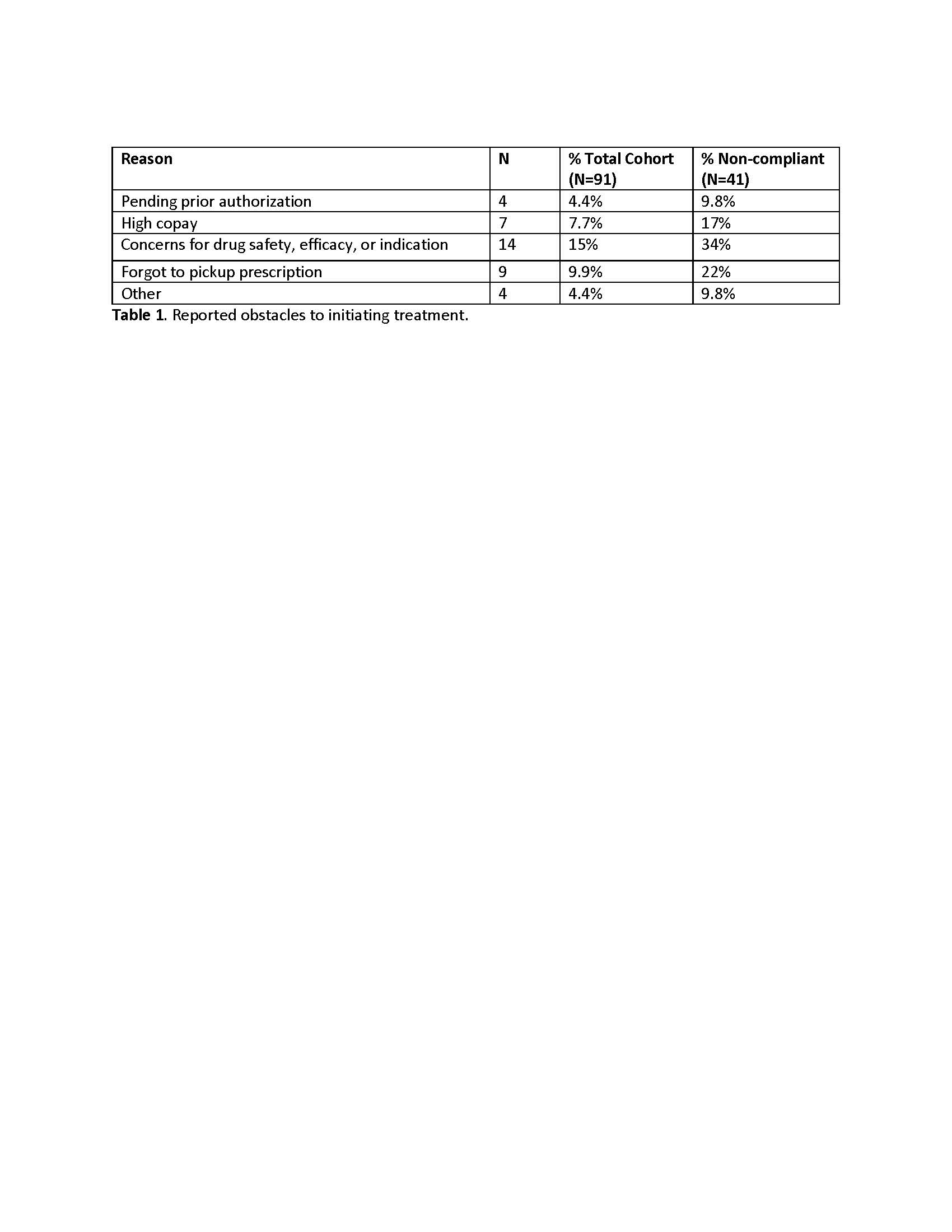Back
Poster, Podium & Video Sessions
Moderated Poster
MP16: Health Services Research: Quality Improvement & Patient Safety I
MP16-15: Low Medication Compliance in New Female Urogynecology Patients
Friday, May 13, 2022
4:30 PM – 5:45 PM
Location: Room 228
Crystal Cisneros*, Tamara Grisales, Ja-Hong Kim, Victor W. Nitti, Amy E. Rosenman, Christopher M. Tarnay, A. Lenore Ackerman, Los Angeles, CA
- CC
Crystal Cisneros
UCLA David Geffen School of Medicine
Poster Presenter(s)
Introduction: As many as 80% of patients with overactive bladder will not remain on their prescribed medications within a year of initial prescription. While medication side effects are a well documented reason for discontinuation, it is unknown how many patients may never obtain their prescribed medications in the first place. This study sought to discover the proportion of patients with voiding dysfunction and pelvic floor disorders who never initiate their prescribed medications and identify barriers to starting therapy.
Methods: We identified new female patients prescribed pharmacologic treatment at initial consultation in a specialized FPMRS clinic. Patients were contacted 1-2 weeks after the initial visit to determine if prescriptions were picked up from the pharmacy and started. For patients who did not initiate treatment, we catalogued if they informed the physicians’ office of these barriers to care and the obstacles encountered to initiating therapy. Obstacles were grouped using thematic analysis. Additional information, including age, medication prescribed, insurance plan, and treatment indications were abstracted.
Results: Of 91 new female urogynecology patients prescribed at least one medication during their initial visit, only 50 (55%) were able to initiate all medications prescribed, 6 of whom were given samples free of charge. Thirteen (14%) of those who obtained their medications reported apprehension regarding high copays, inadequate drug efficacy, or safety that either led to discontinuation of treatment within the first two weeks or presented obstacles in obtaining future refills. Forty-one patients (45%) did not pick up thier prescriptions due to pending prior authorizations (4.4%), high copays (7.7%), concerns about drug safety, efficacy, or indication (15%), or failure to recall treatment plan (9.9%). Only 16 (39%) of the 41 patients contacted the office within 2 weeks of the prescription to report these concerns, while the remaining 25 (61%) did not inform the office until after they were contacted.
Conclusions: A large proportion of urogynecology patients never initiate prescribed therapy for voiding dysfunction and pelvic floor disorders. Significant obstacles to obtaining and initiating pharmacologic therapy may comprise a larger contribution to poor medication compliance than previously recognized.
Source of Funding: None

Methods: We identified new female patients prescribed pharmacologic treatment at initial consultation in a specialized FPMRS clinic. Patients were contacted 1-2 weeks after the initial visit to determine if prescriptions were picked up from the pharmacy and started. For patients who did not initiate treatment, we catalogued if they informed the physicians’ office of these barriers to care and the obstacles encountered to initiating therapy. Obstacles were grouped using thematic analysis. Additional information, including age, medication prescribed, insurance plan, and treatment indications were abstracted.
Results: Of 91 new female urogynecology patients prescribed at least one medication during their initial visit, only 50 (55%) were able to initiate all medications prescribed, 6 of whom were given samples free of charge. Thirteen (14%) of those who obtained their medications reported apprehension regarding high copays, inadequate drug efficacy, or safety that either led to discontinuation of treatment within the first two weeks or presented obstacles in obtaining future refills. Forty-one patients (45%) did not pick up thier prescriptions due to pending prior authorizations (4.4%), high copays (7.7%), concerns about drug safety, efficacy, or indication (15%), or failure to recall treatment plan (9.9%). Only 16 (39%) of the 41 patients contacted the office within 2 weeks of the prescription to report these concerns, while the remaining 25 (61%) did not inform the office until after they were contacted.
Conclusions: A large proportion of urogynecology patients never initiate prescribed therapy for voiding dysfunction and pelvic floor disorders. Significant obstacles to obtaining and initiating pharmacologic therapy may comprise a larger contribution to poor medication compliance than previously recognized.
Source of Funding: None


.jpg)
.jpg)